The Singapore Port is located at the intersection of Malacca Strait and Singapore Strait, on the southern coast of Singapore.
It is the second largest port in the world.
The container throughput of Singapore Port was surpassed by Shanghai Port in 2010.
In 2018, the Port of Singapore handled 36.6 million TEU
The port terminals are located in Tanjong Pagar, Keppel, Blarney, Pasir Panjang, Sembawang and Jurong. The port is a transit point for about 140,000 cargo ships every year, and can connect 600 ports in 123 countries around the world.
The port of Singapore has 204 terminals, and the cranes equipped with the terminals can load and unload cargo, which gives the Singapore port a maritime trade control function, which connects many countries together by waterway.
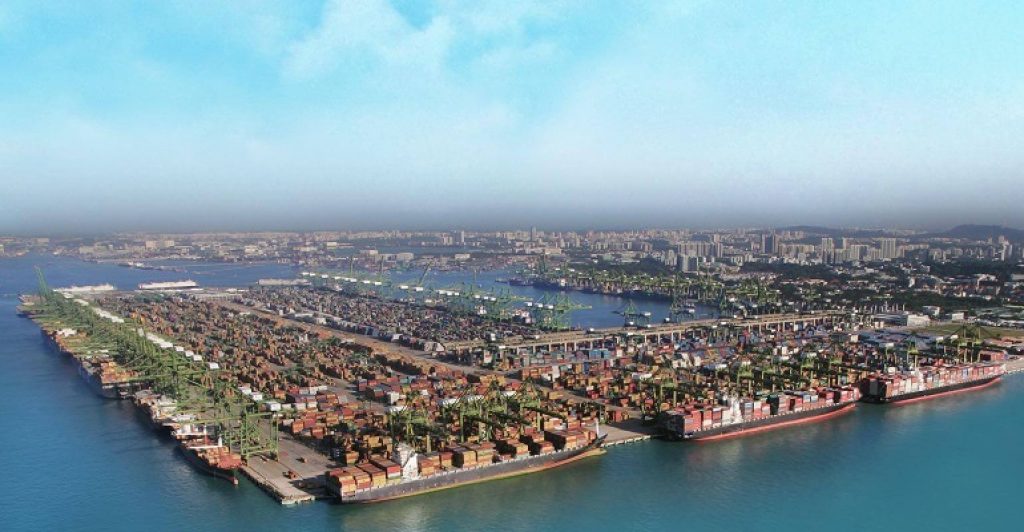
Singapore Port History
In the late 13th century, a kingdom called Singapore was established around the old port on the north bank of the Singapore River.
The discovery of archaeological artifacts (glassware, porcelain, etc.) in the Riau Archipelago indicates that Singapore Port was the only port in the southern part of the Strait of Malacca at the time, and also a port for service providers and traders in the area.
By the 15th century, due to the rise of the Malacca Sultanate, Singapore was no longer an international trading port. The local trade on the island continues.
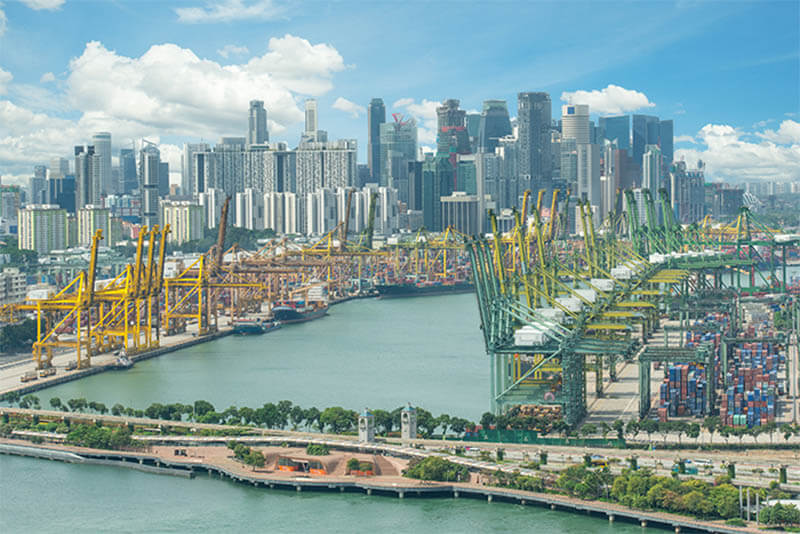
In the early 17th century, Singapore’s main settlement and its port were destroyed by a punitive force from Aceh.
After this incident, there was no significant settlement or port at Singapore until 1819 when Sir Stamford Raffles, excited by the deep and sheltered waters in Keppel Harbour, established for Britain a new settlement and international port on the island or a trading port.
The industrialization of the Port of Singapore was established in 1819.
In order to develop rapidly, the Port of Singapore allocates some benefits (land of the port) to traders, and many traders (mainly the two countries in China and Britain) own shares in the port.
This move has gradually increased the reputation of Singapore Port among traders, and more and more traders are willing to come to Singapore Port. The increase in traders has led to an increase in industrial facilities, Chinese traders have established trading companies here, and British traders have established warehouses.
In order to adapt to development, the management of Singapore Port has been simplified. While other ports still maintain cumbersome settlement steps, more and more traders have chosen the free and simple Singapore Port.
In this way, Singapore Port successfully replaced Indonesia’s Batavia (today’s Jakarta) and became a trade center in Southeast Asia in the 1830s.
Since Singapore’s complete independence in 1965, it had to compete with other ports in the region to attract transportation and trade at its ports. To this end, it has developed an export-oriented economy based on value-added manufacturing.
In the 1990s, the port became more well-known, surpassed Yokohama, and eventually became the busiest port in shipping tonnage.
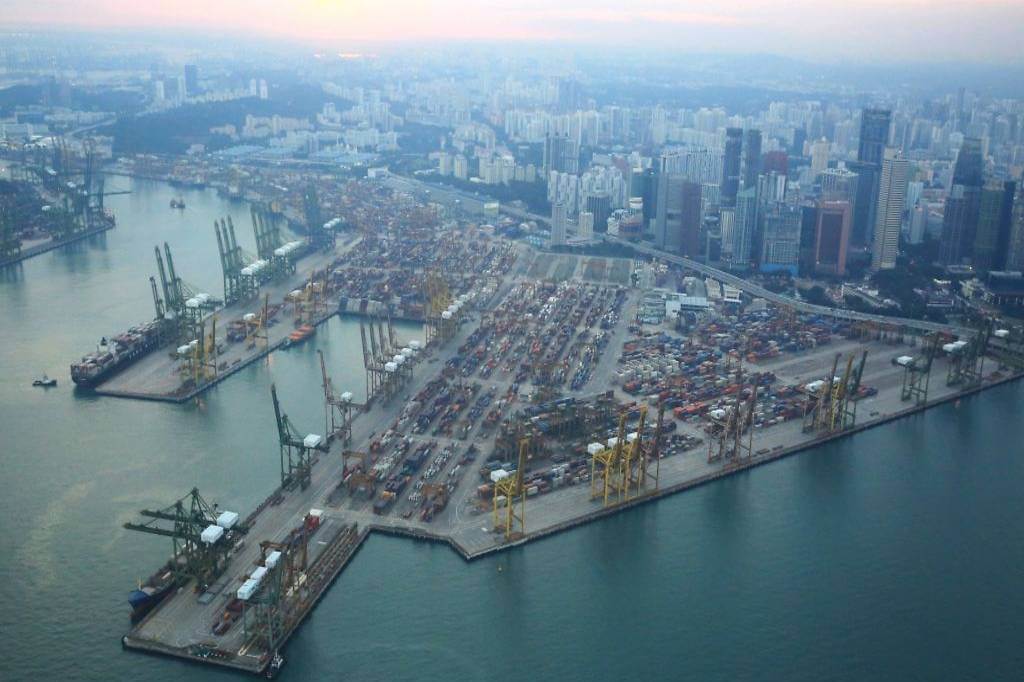
Important functions of Singapore Port
Singapore Port manages one-fifth of global freight volume through container trucks. Many terminals at the port manage 25.86 million container units, each 20 feet long.
Not only is the port handling cargo, but the port of Singapore is also a port of one million cruise passengers every year.
Facilities available at the port include container terminals, winches, warehouses, information systems, intermodal transportation systems, and of course, docks where ships dock.
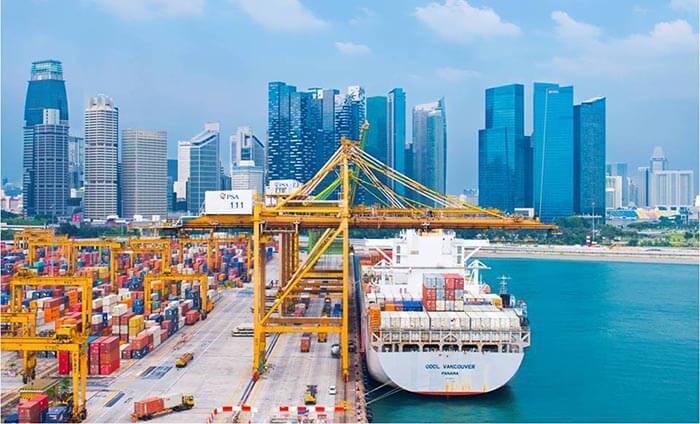
A number of facilities and services provided by the Port of Singapore enable the port to accommodate thousands of cargo and container trucks. In addition, large warehouses for storing goods and port land can be used as cargo storage, packaging, consolidation and distribution.
Approximately 80% of container trucks that arrive in Singapore must first pass through the big port. Port of Singapore even has a terminal that serves a special purpose for gas and oil products.
There is also a special terminal to accommodate steel and cement products. Unmitigated, the international standard port also provides a special terminal for cars. Obviously, the port is indeed one of the centers of car shipping in the region.
Singapore port statistics
| Year | Vessel Arrival Tonnage (billion GT) | Container Throughput (million TEUs) | Cargo Throughput (million tonnes) | Bunker Sale Volume (million tonnes) | Tonnage under Singapore Registry of Ships (million GT) |
| 2014 | 2.37 | 33.9 | 581.3 | 42.4 | 82.2 |
| 2015 | 2.50 | 30.9 | 575.8 | 45.2 | 86.3 |
| 2016 | 2.66 | 30.9 | 593.3 | 48.6 | 88.0 |
| 2017 | 2.80 | 33.7 | 627.7 | 50.6 | 88.8 |
| 2018 | 2.79 | 36.6 | 630.0 | 49.8 | 90.9 |
Tuas Port
The new Tuas Port will use automated technology to carry out its key operations, as Singapore sets out to reinvigorate and re-imagine the maritime industry which employs 170,000 people here.
When fully completed in 2040, the mega port will be the world’s largest fully automated terminal.
This will be twice the size of Hongmao Bridge, and boast features such as automated wharf and yard functions and full-electric automated guided vehicles
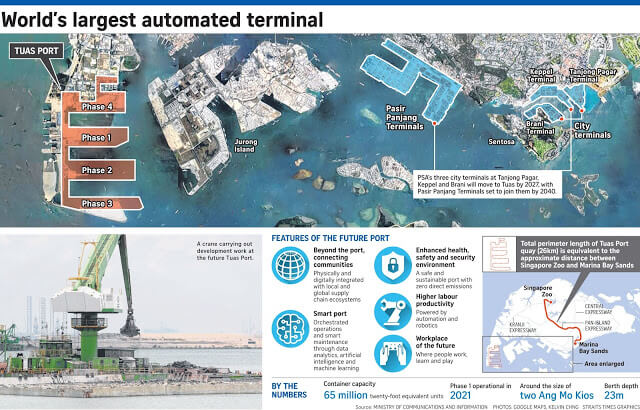
The mega port is being developed in four phases, with construction work on the second phase having begun in July, 2019. The whole project will cost over $20 billion.
Its first berths are scheduled to start operating in 2021. PSA’s three city terminals at Tanjong Pagar, Keppel and Brani will move by 2027. By 2040, Pasir Panjang Terminals will be consolidated at the mega port too.
With the port’s capacity almost doubling, more jobs are likely to be created despite the automation.
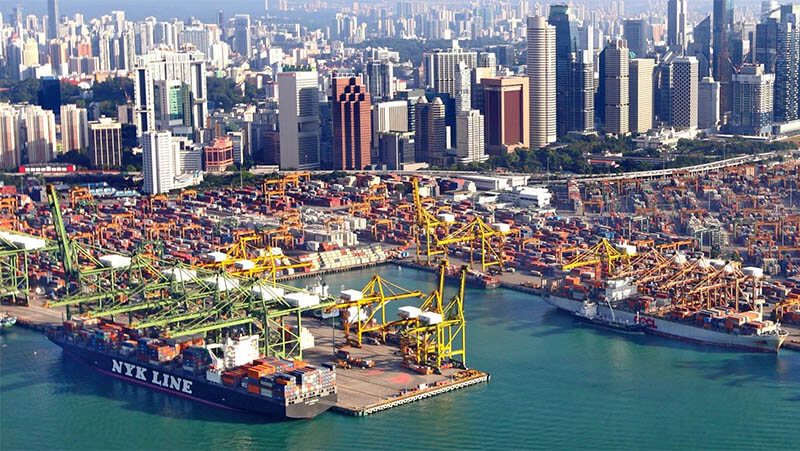
Singapore Port Data
- Country
- Singapore
- Location
- Shanghai, China
- Year of opening
- late 13th century
- Industrialization date
- 1819
- Status
- In use
- Operator(s)
- PSA International
- Port type
- Deepwater seaport
- Features
- Natural port, Artificial port
- Sea area
- Singapore Strait, Malacca Strait
- Annual container volume
- 36.6 million TEU (2018)
- Annual container volume
- 630 million tons (2018)
View Singapore Port on Google Satellite Map
Google satellite maps allow you to see building details more clearly, including natural landscapes such as mountains, rivers, deserts, sea and man-made engineering buildings.
If you are very interested in this engineering building, it is a good idea to click below Google Map icon. We will help you jump to the corresponding location of this building or engineering on Google satellite map.




























































